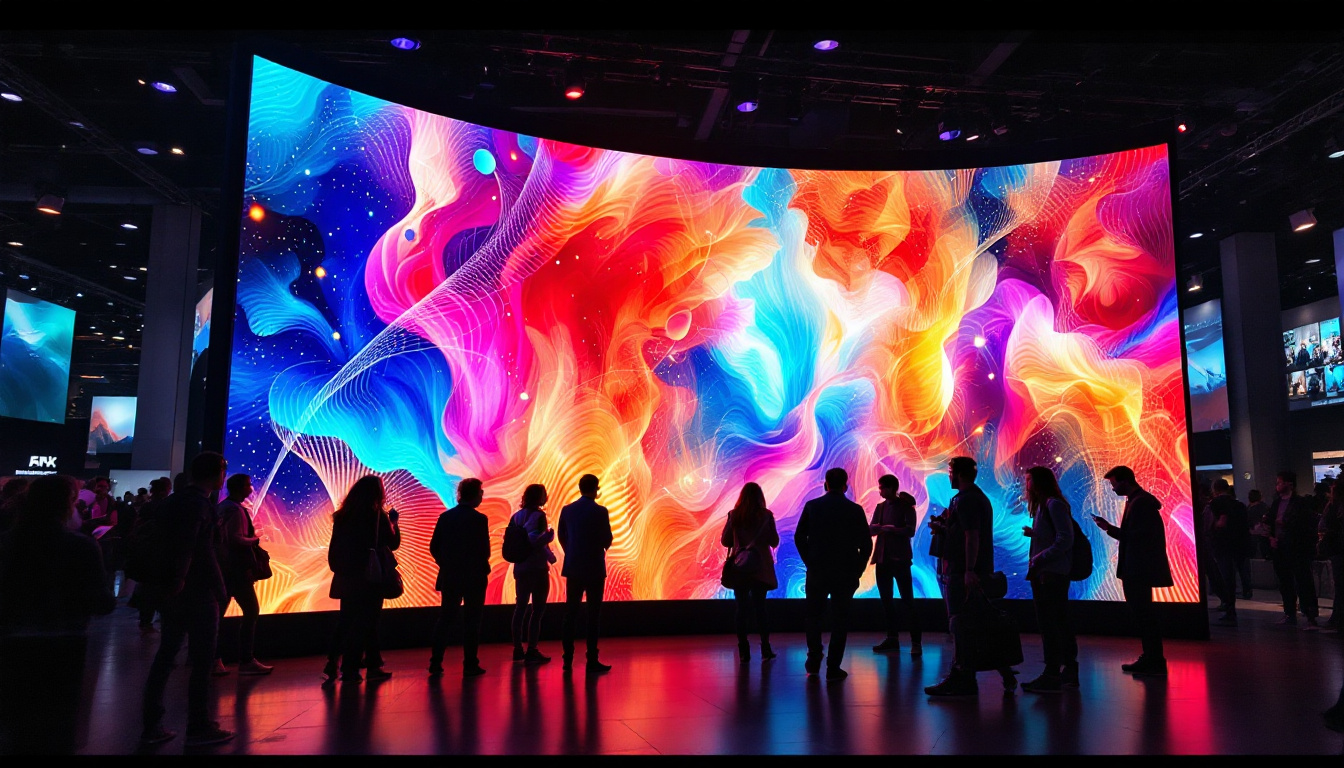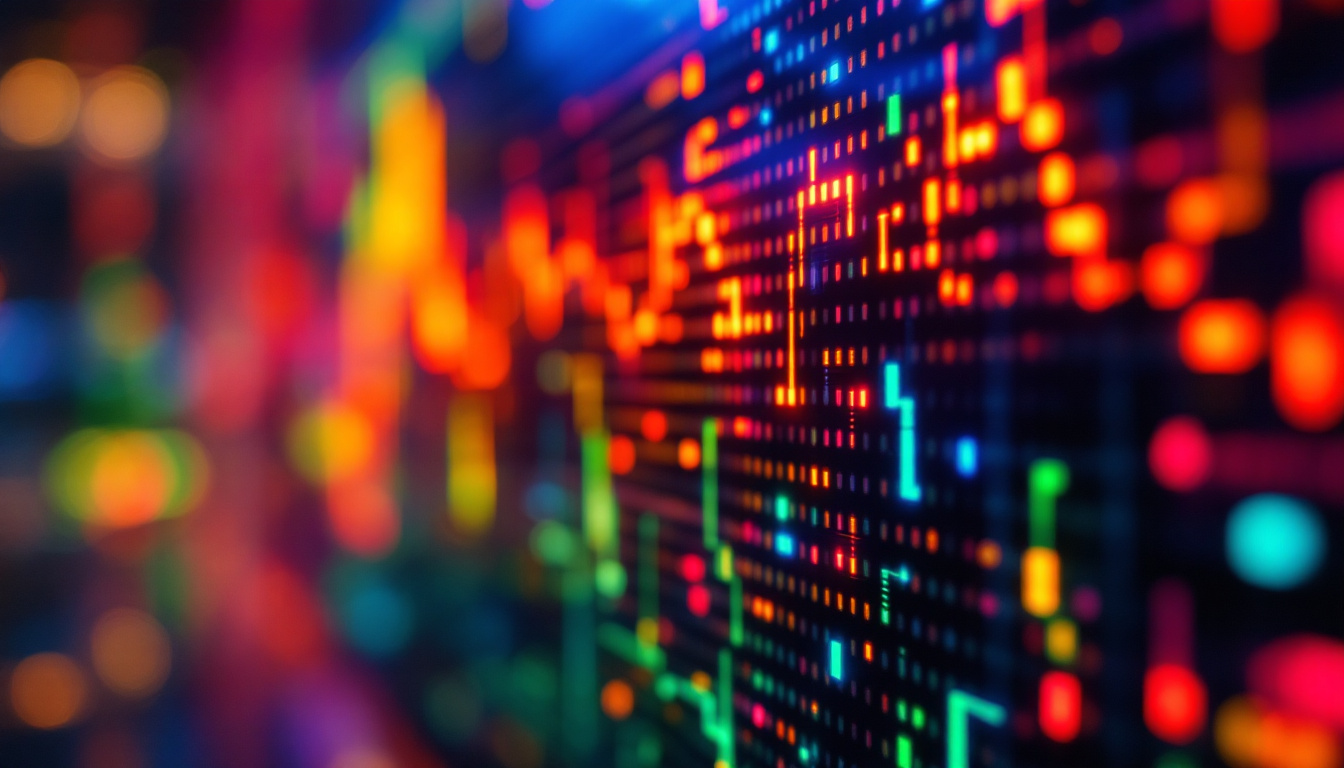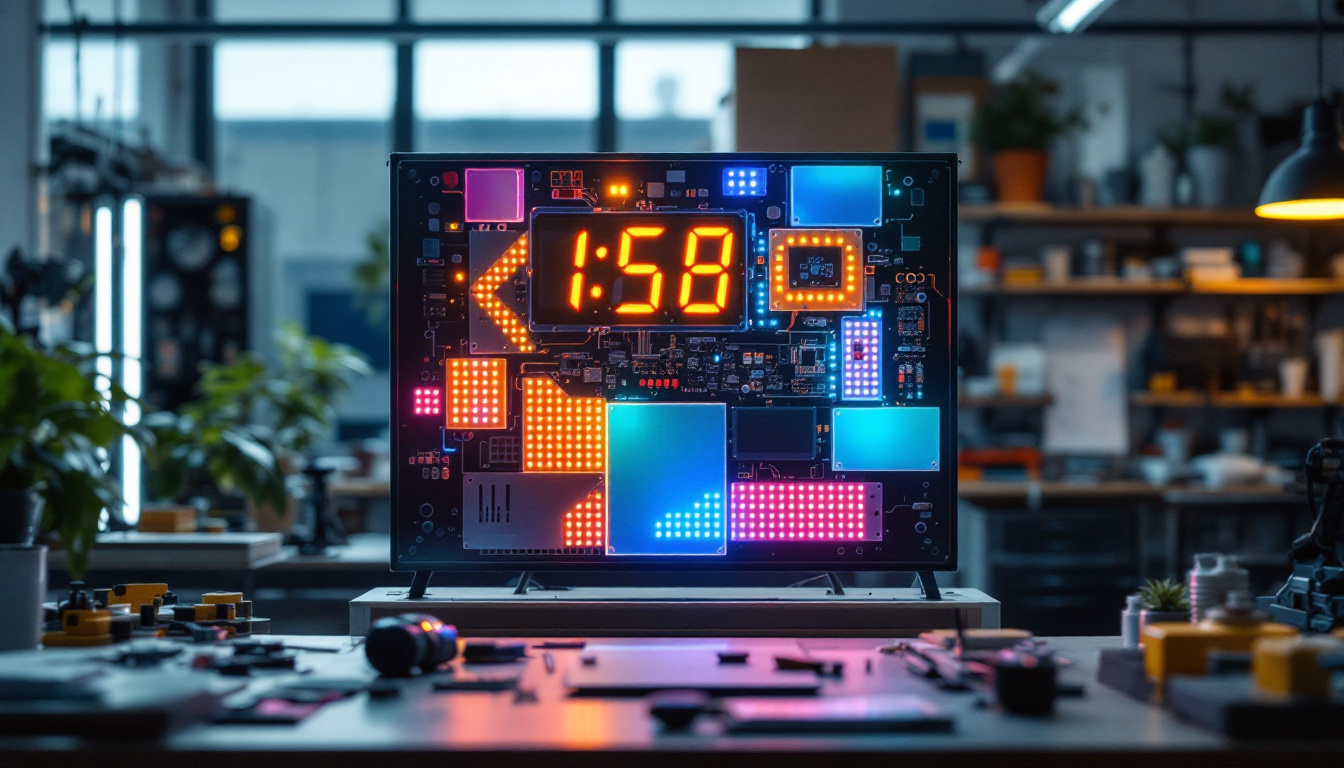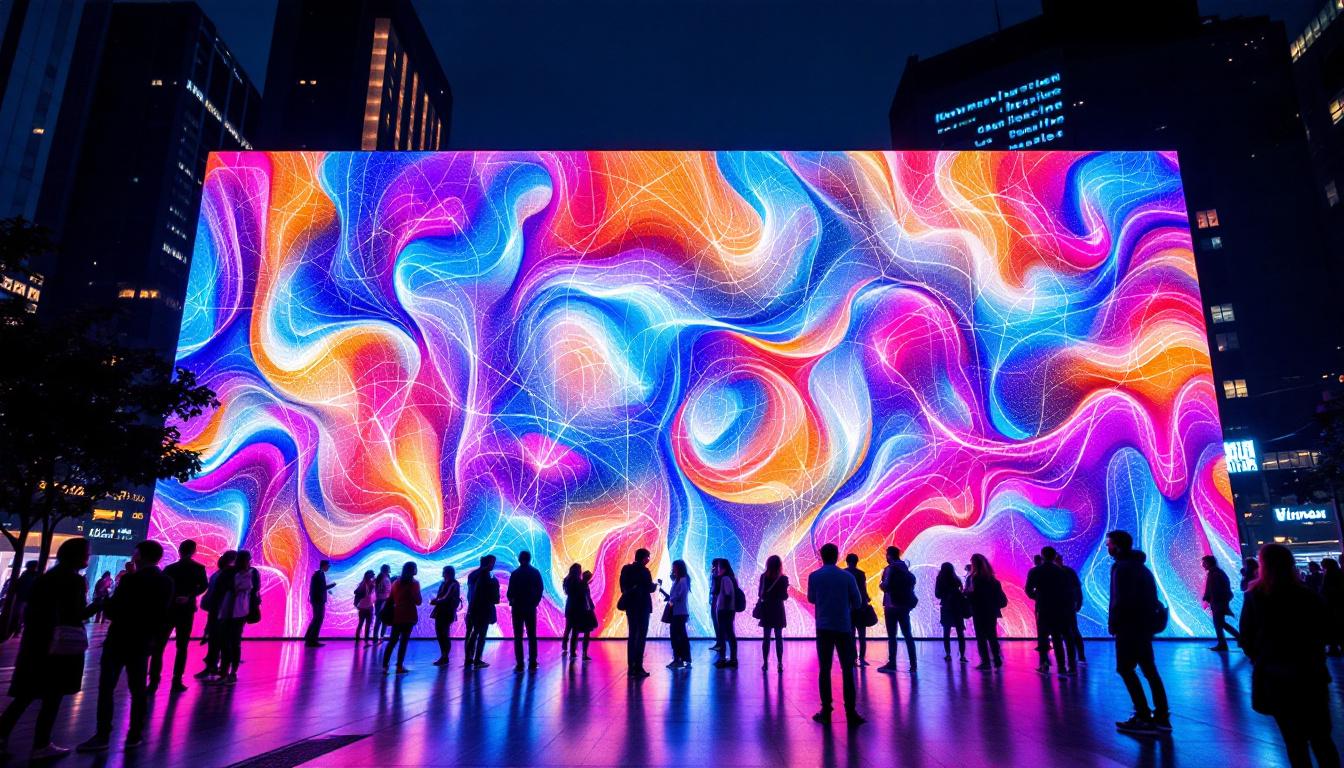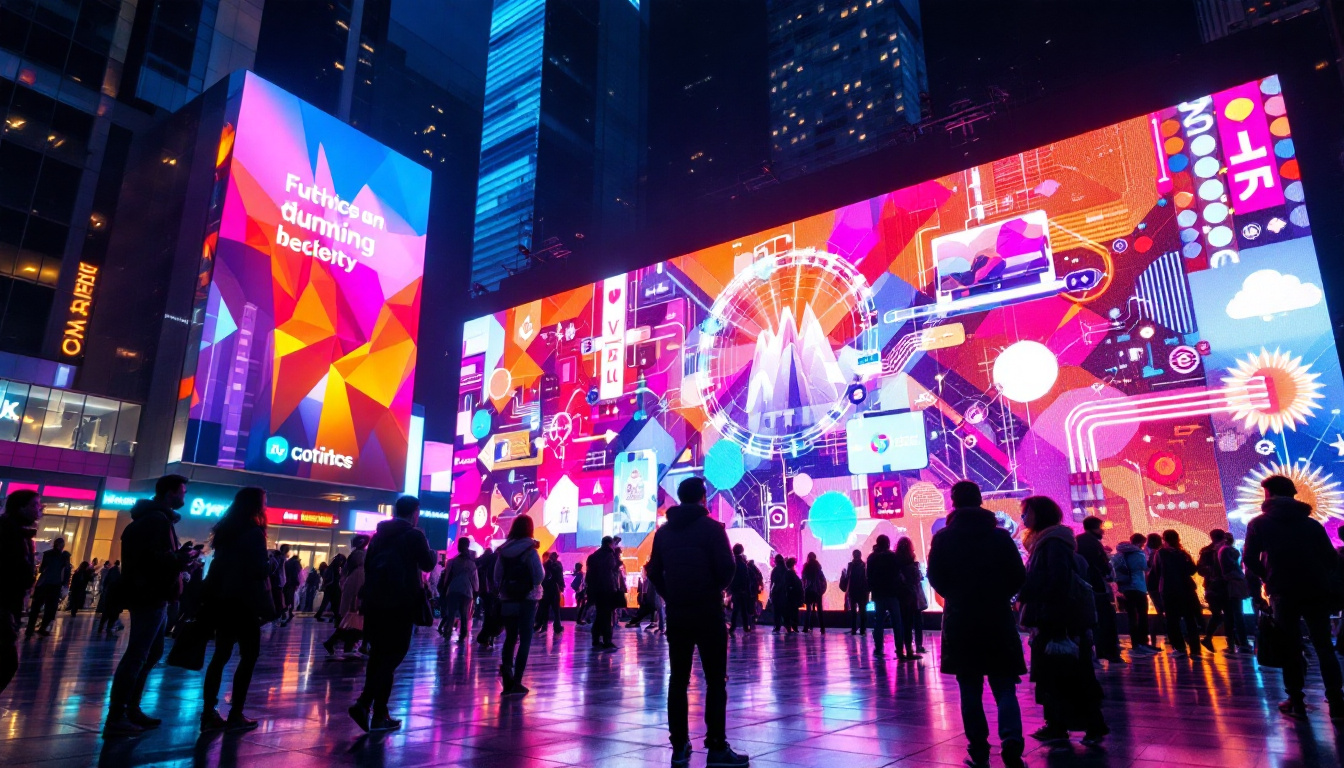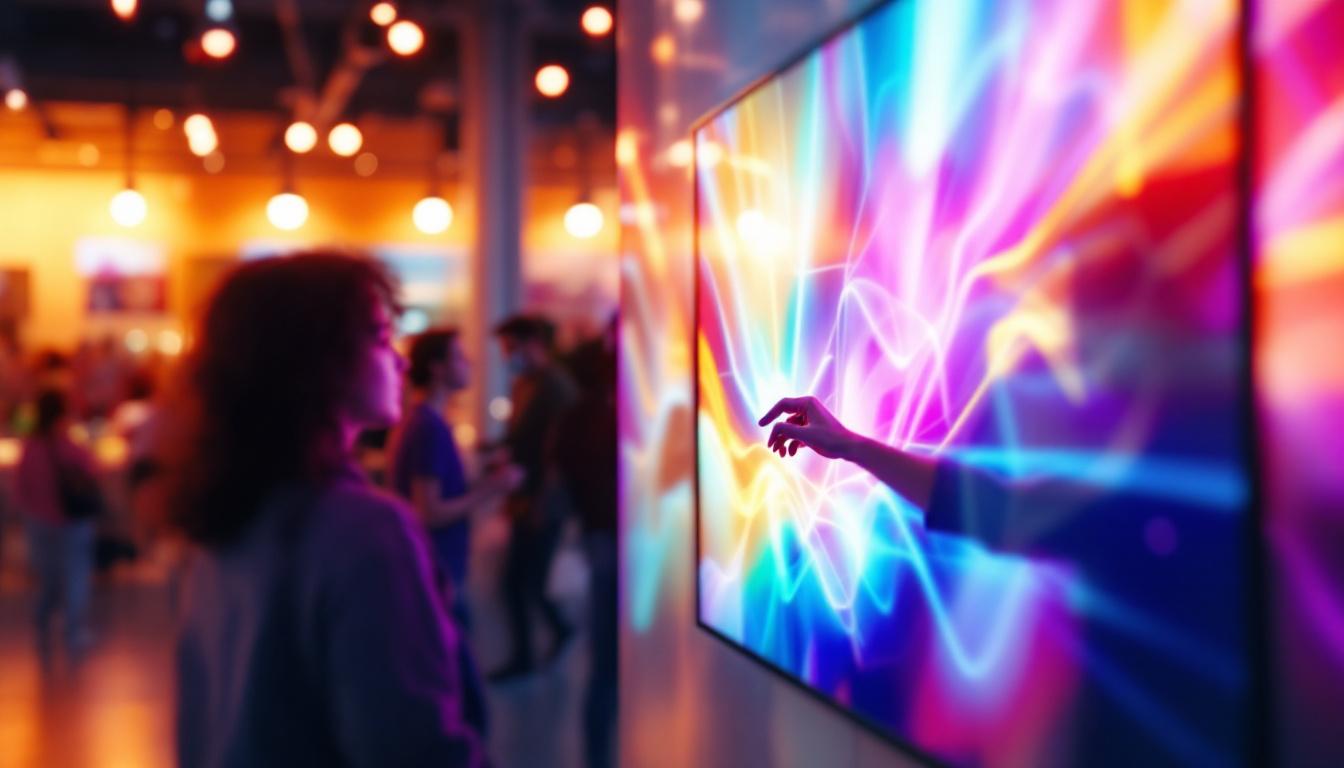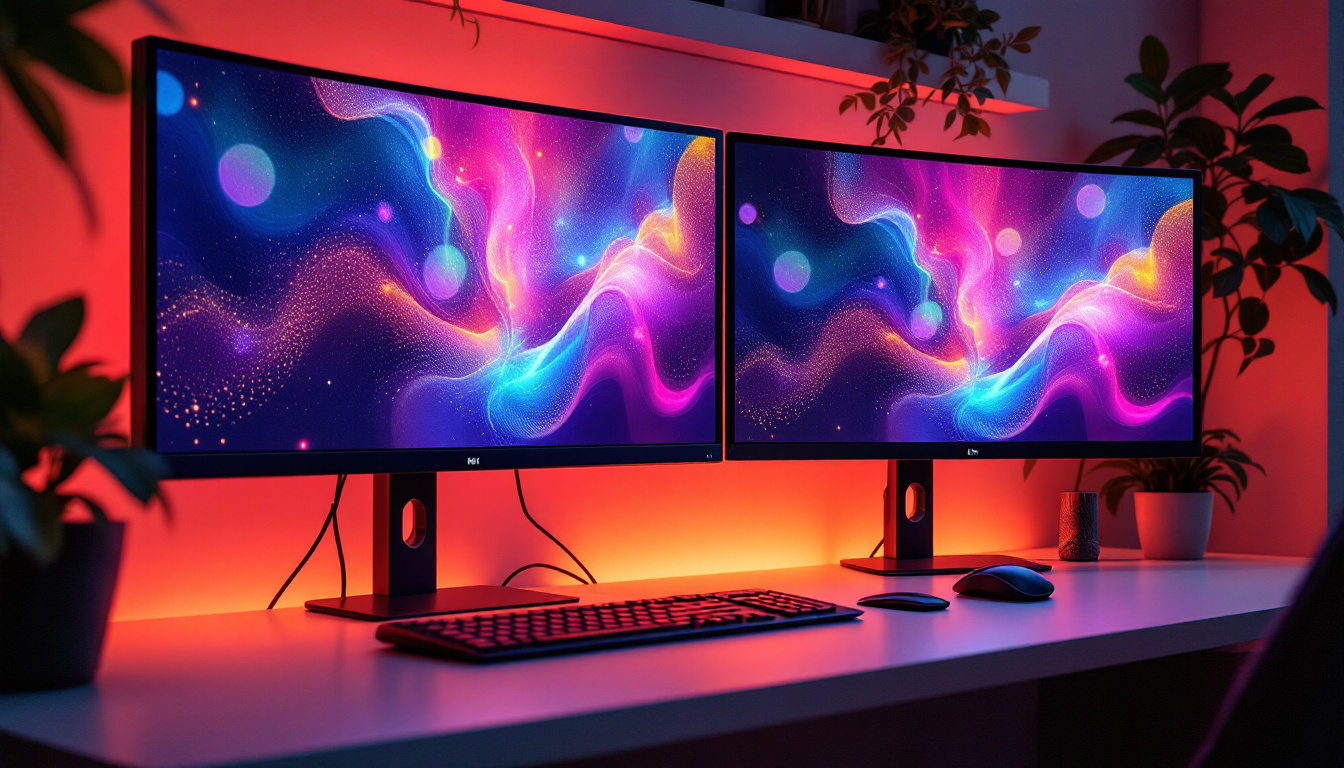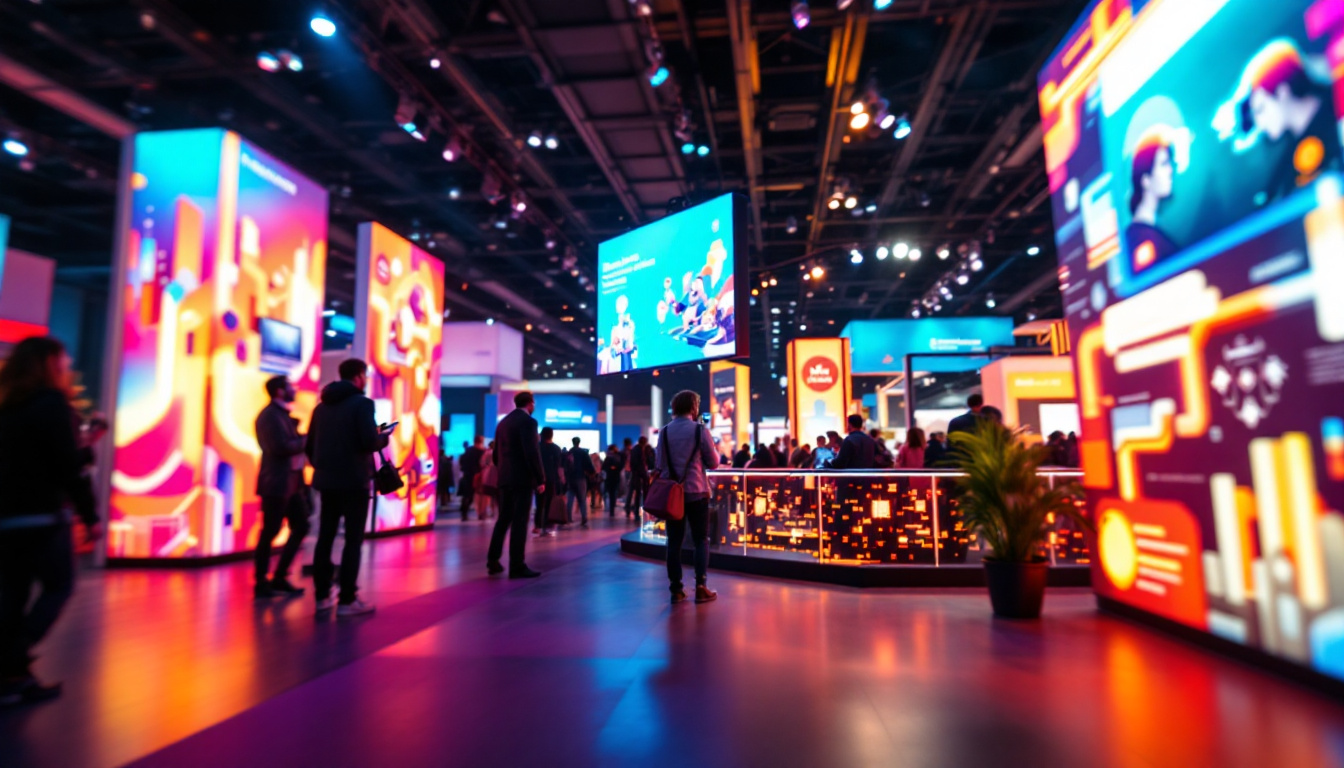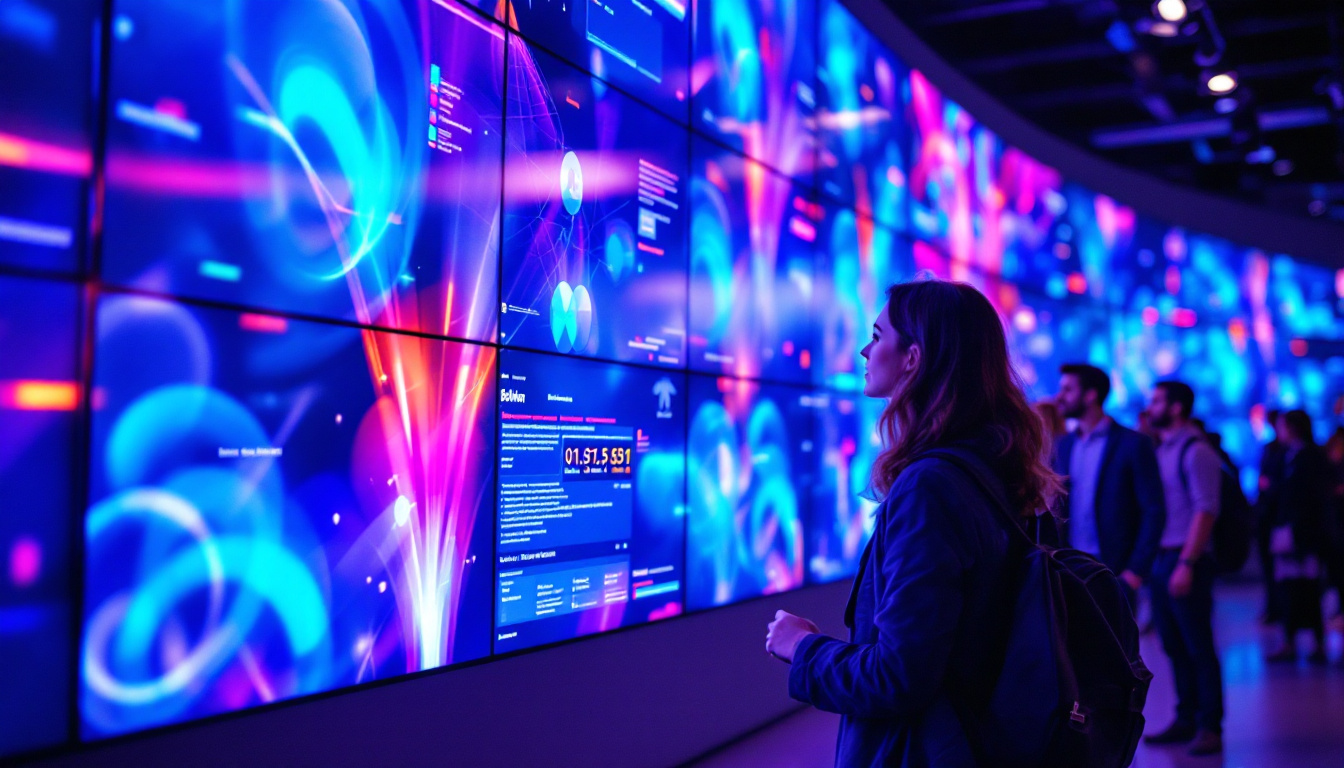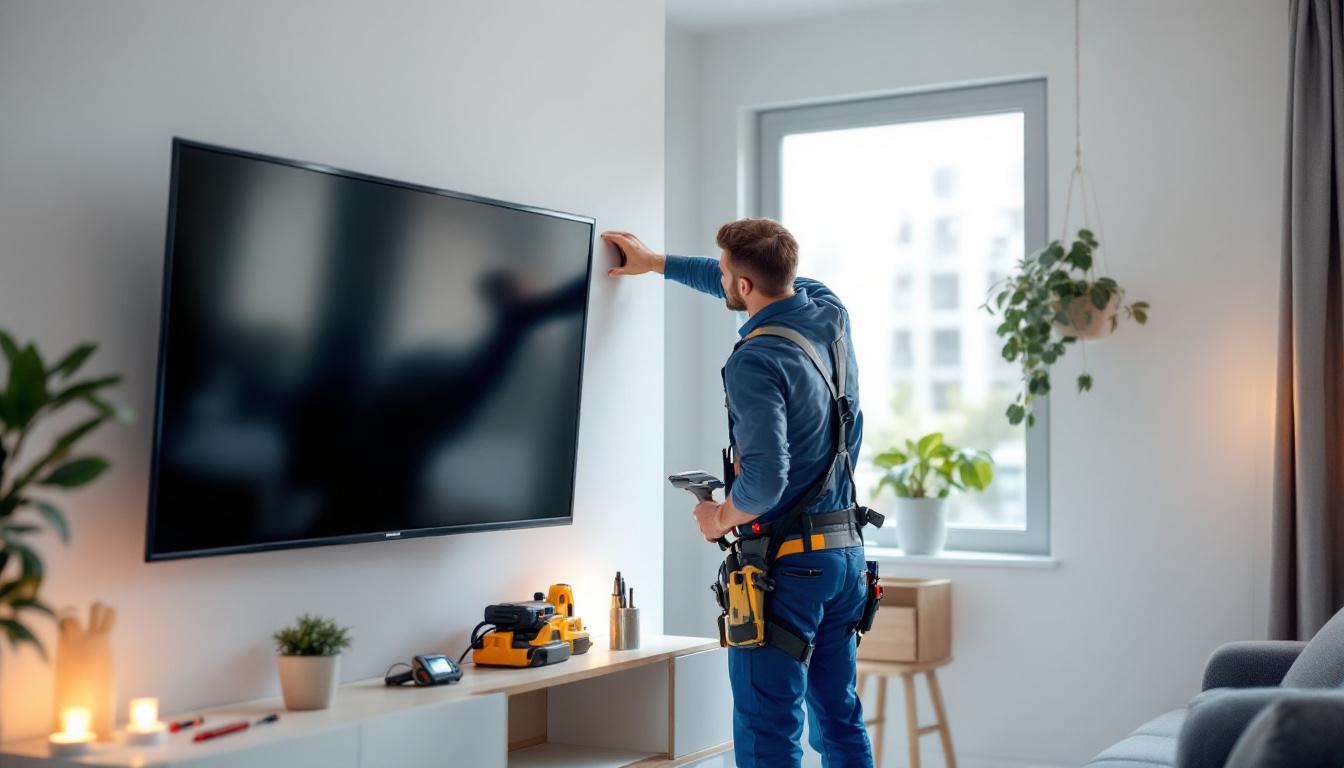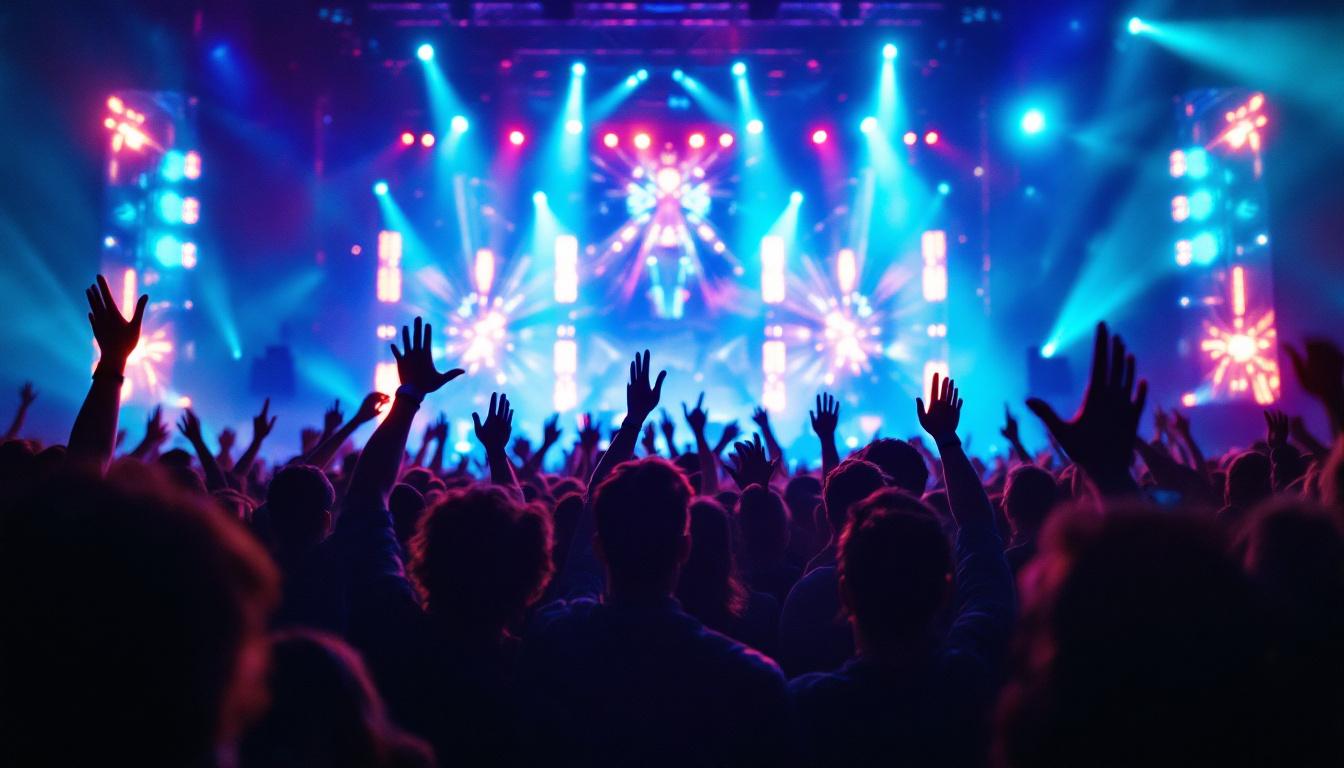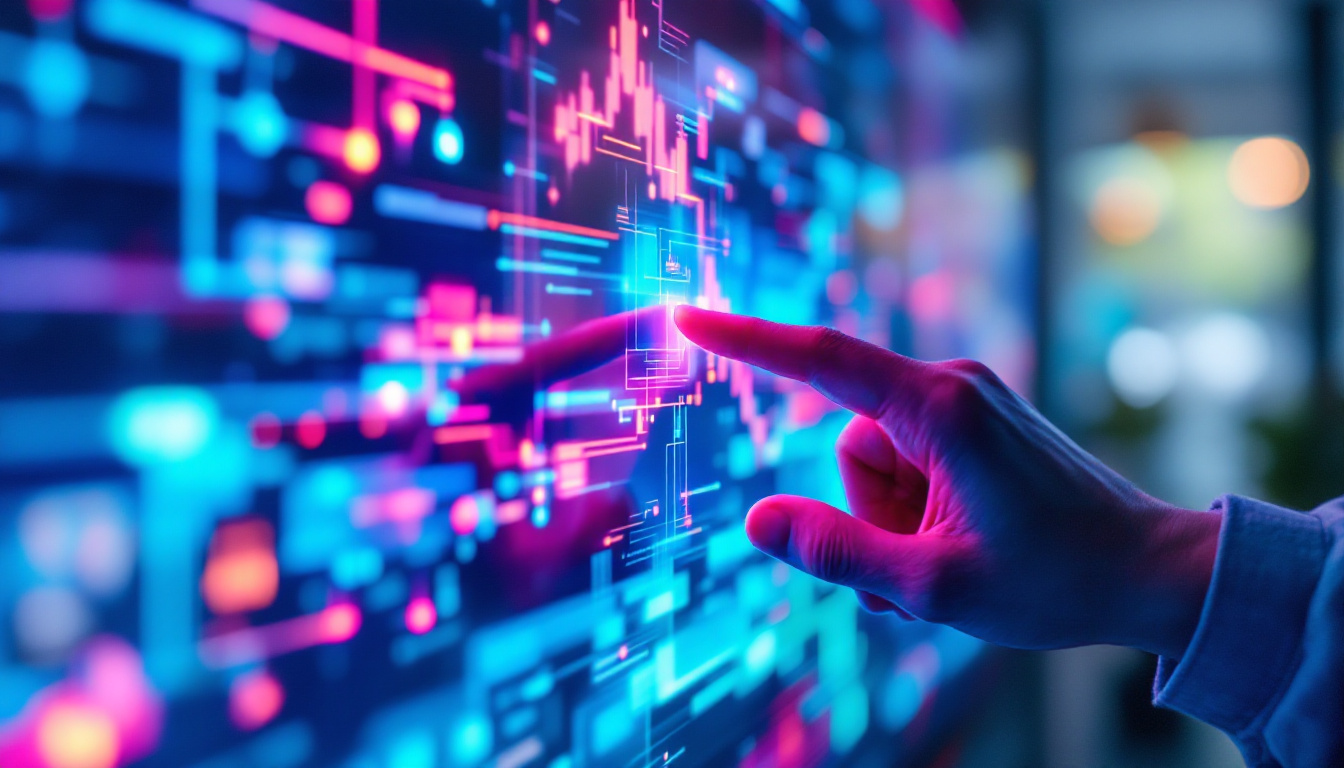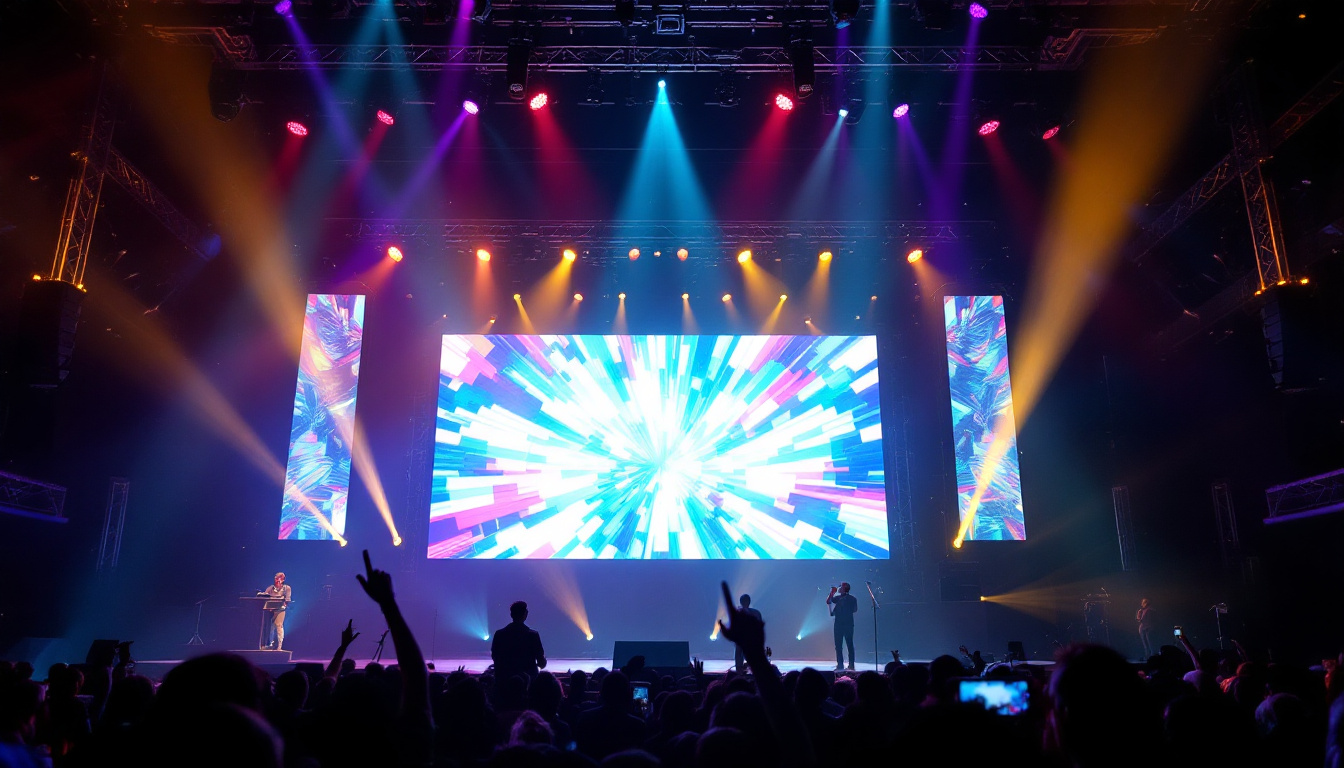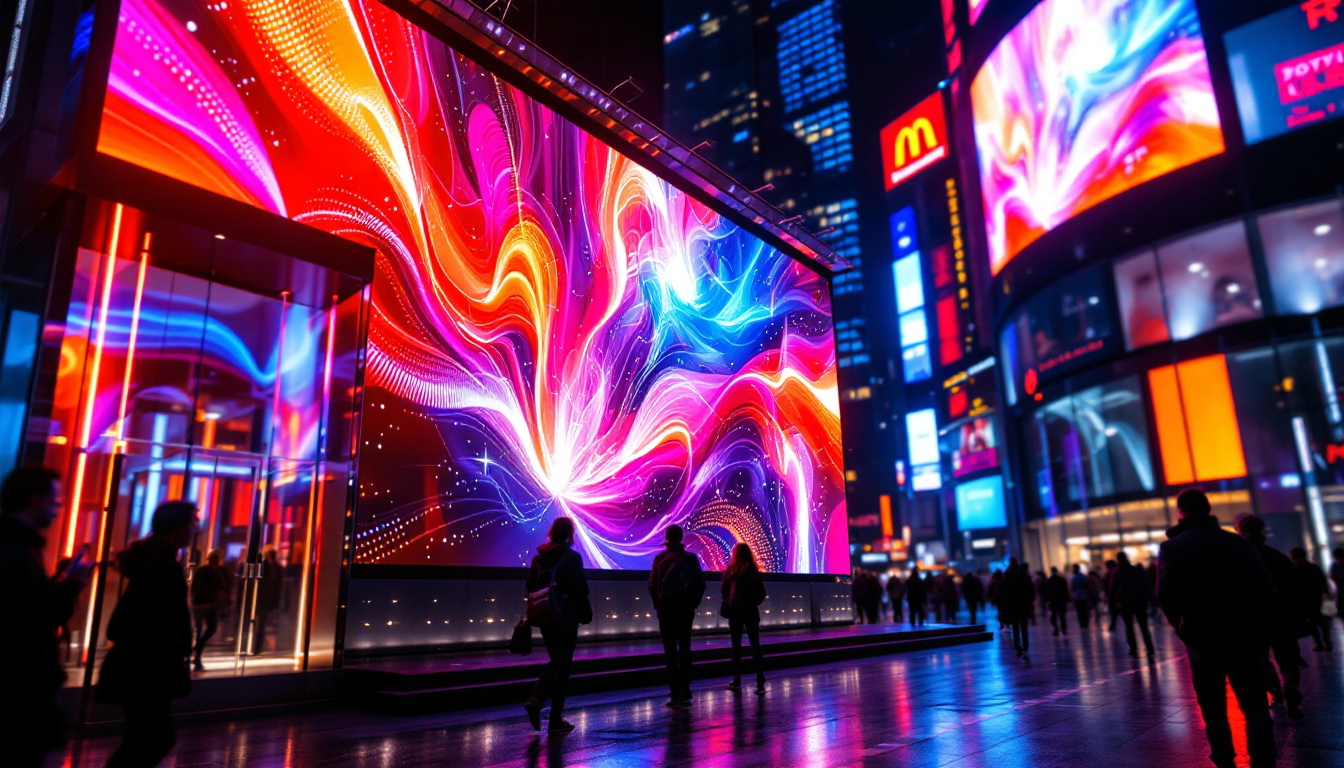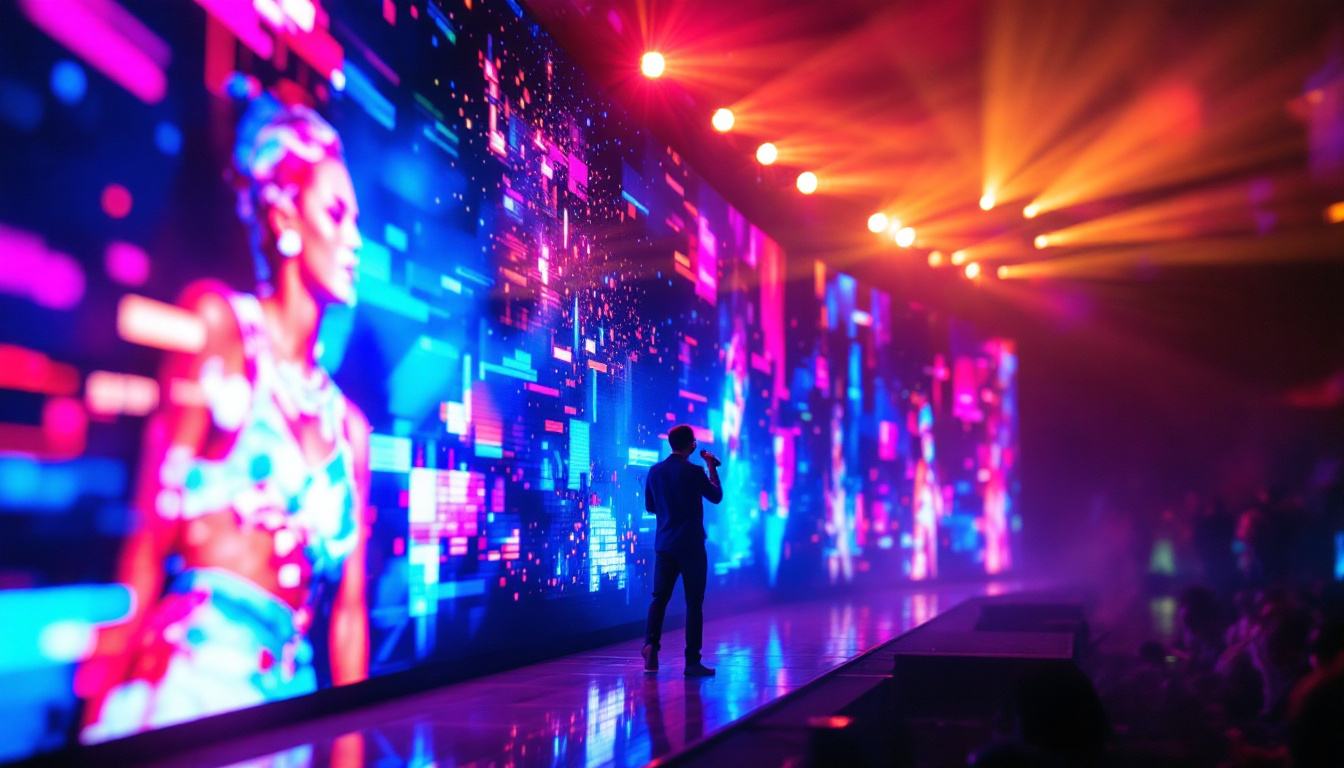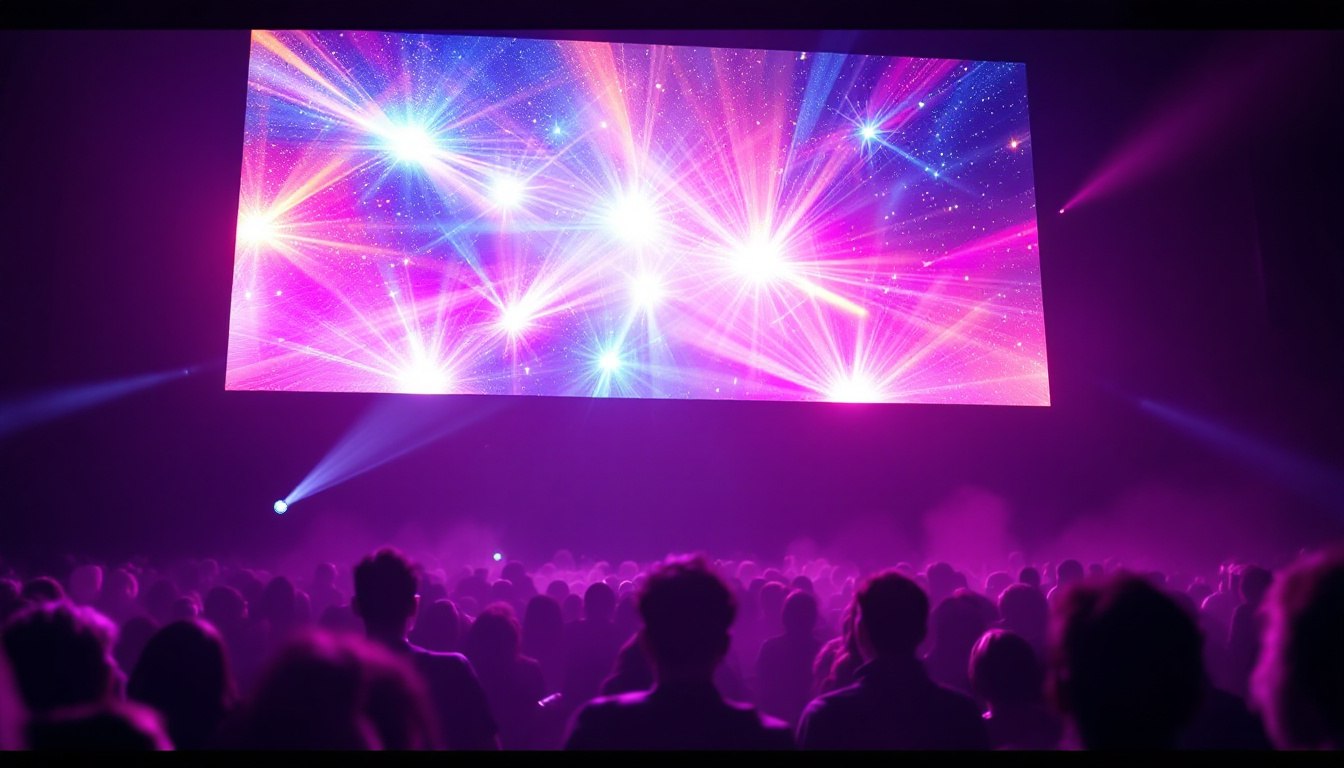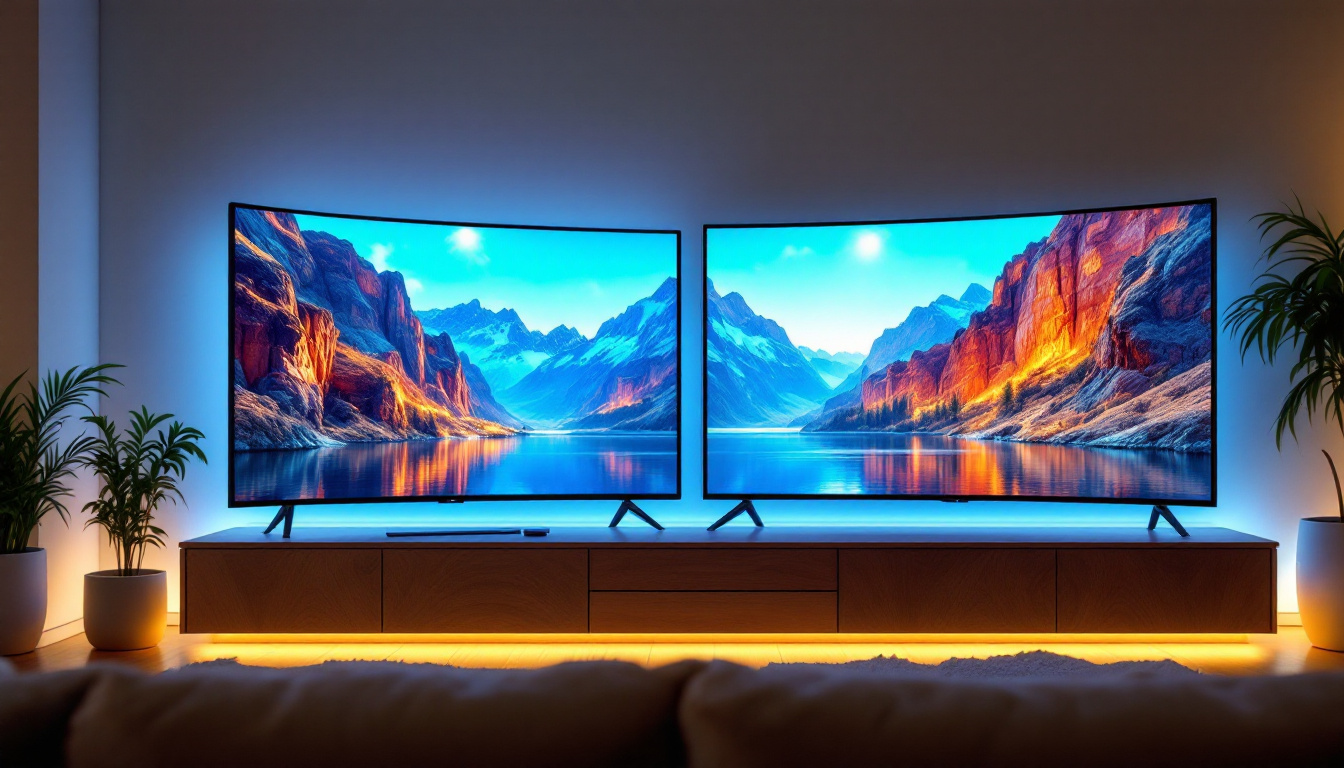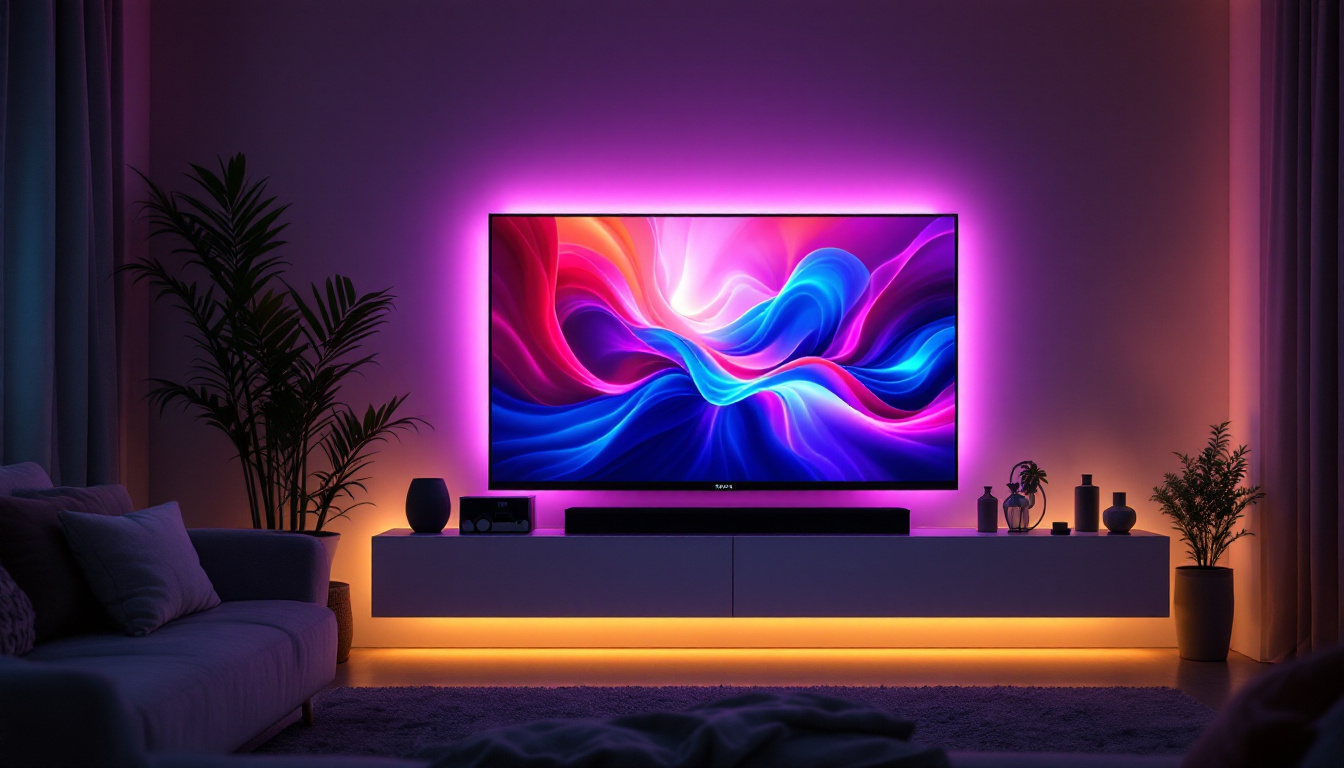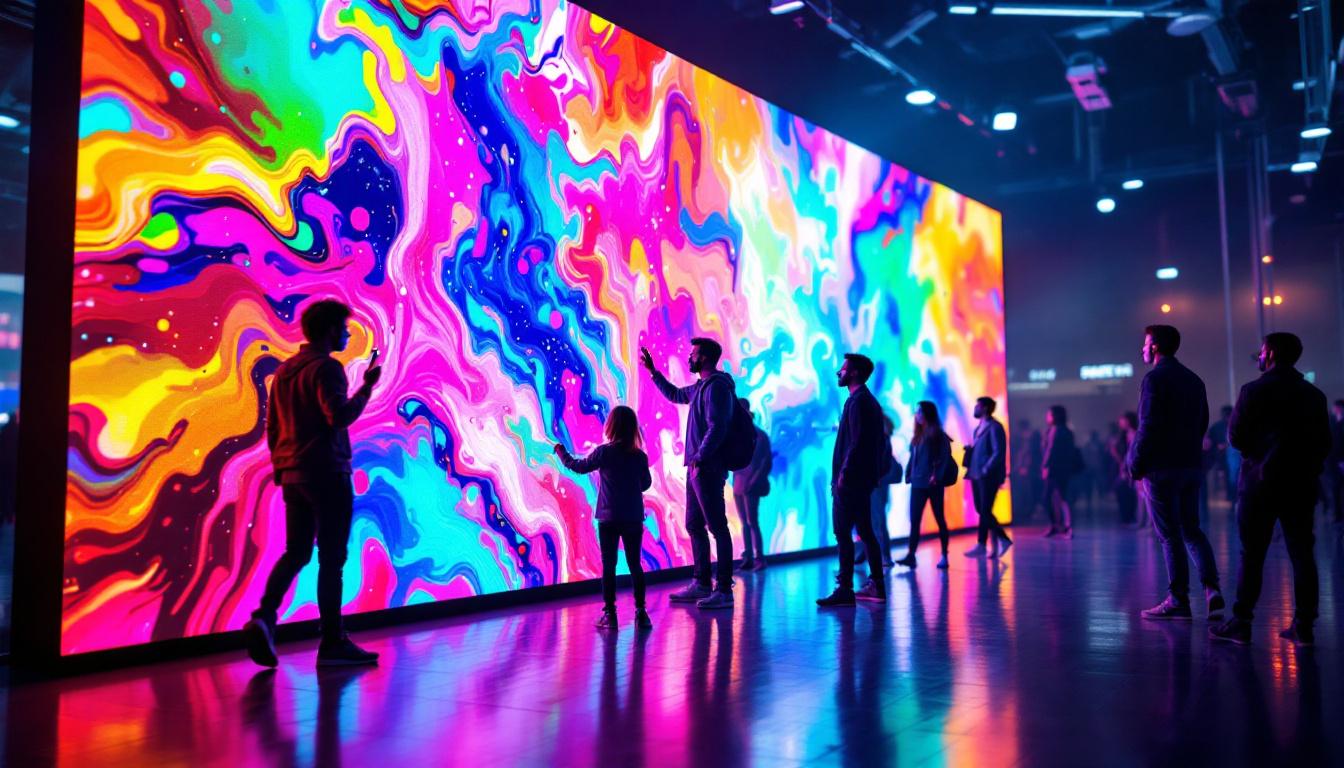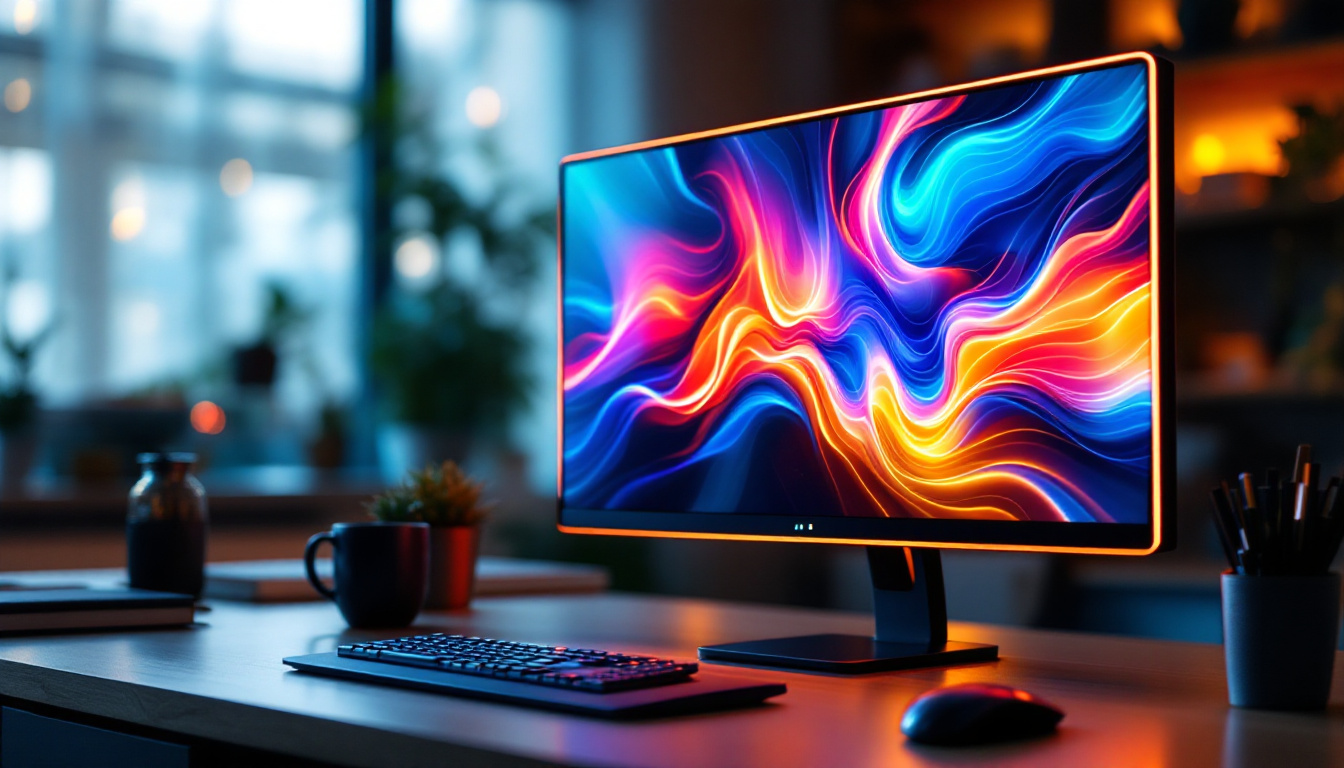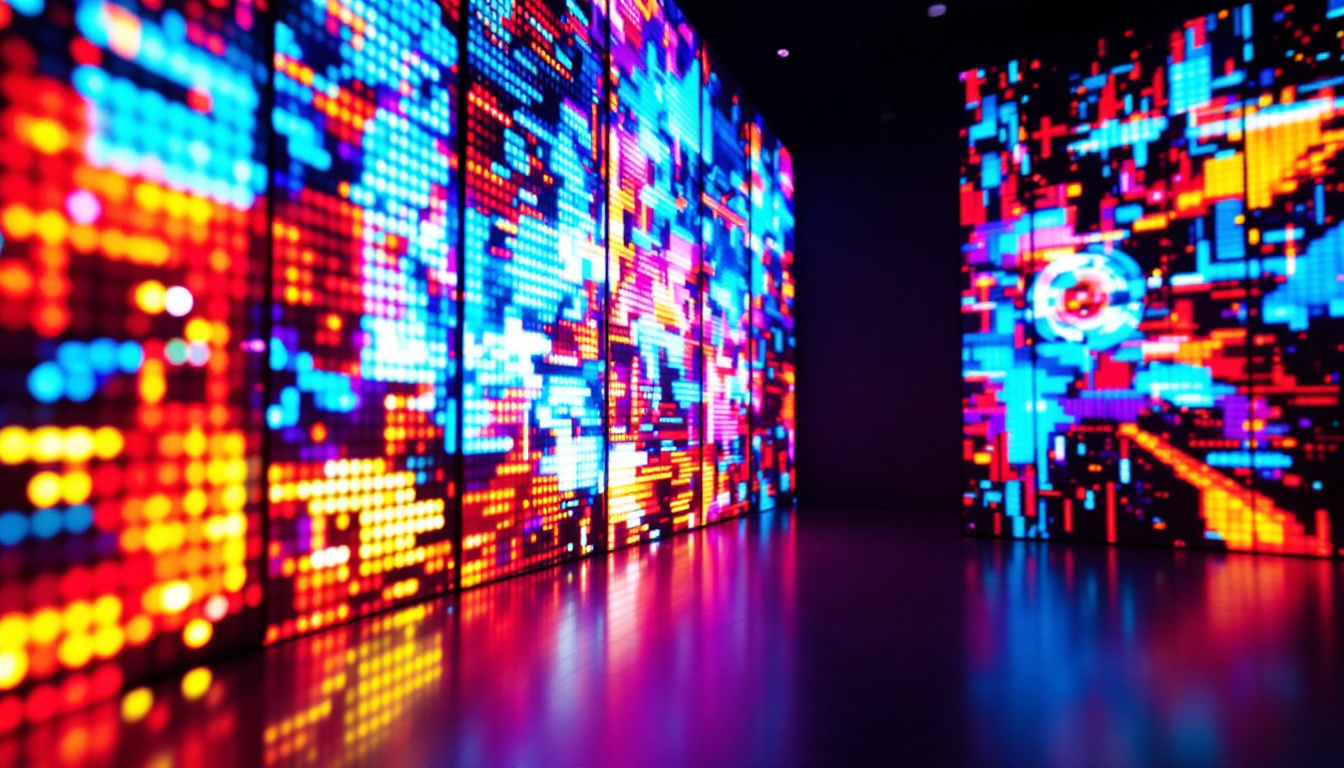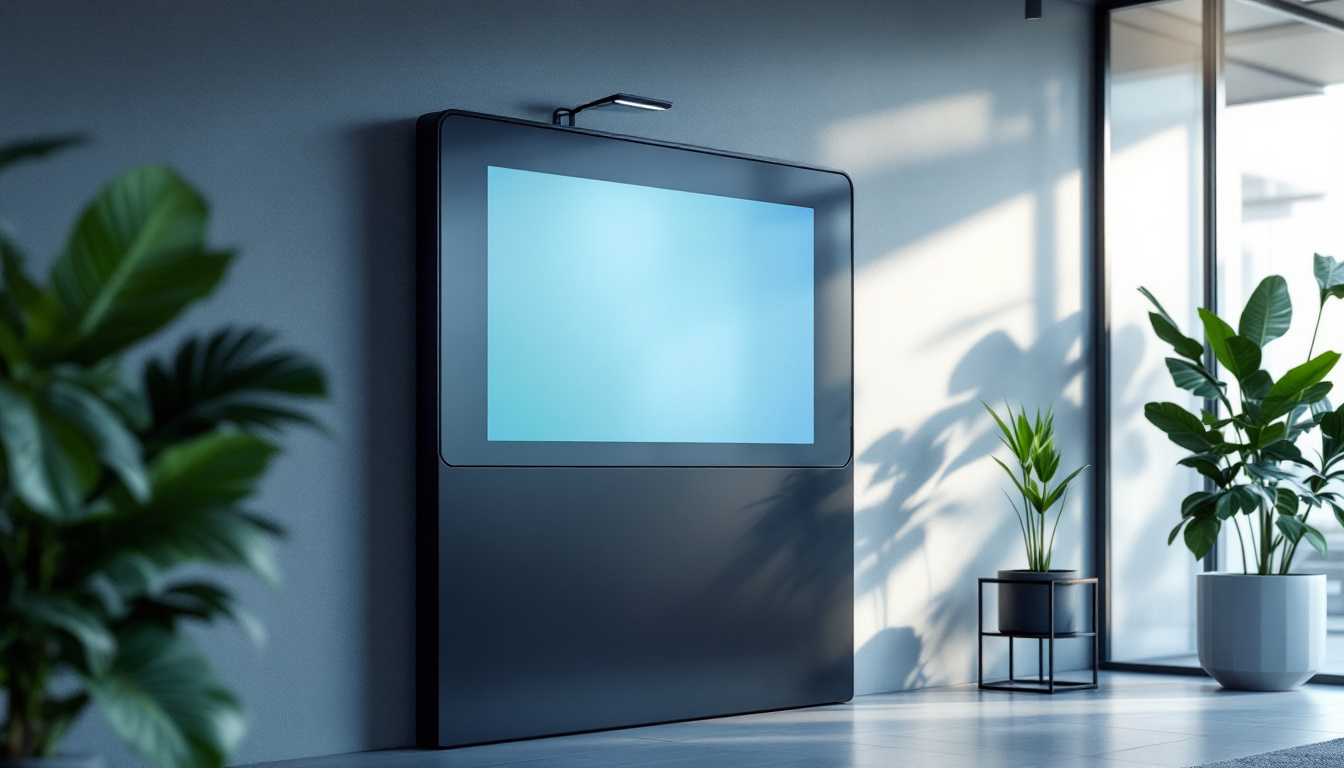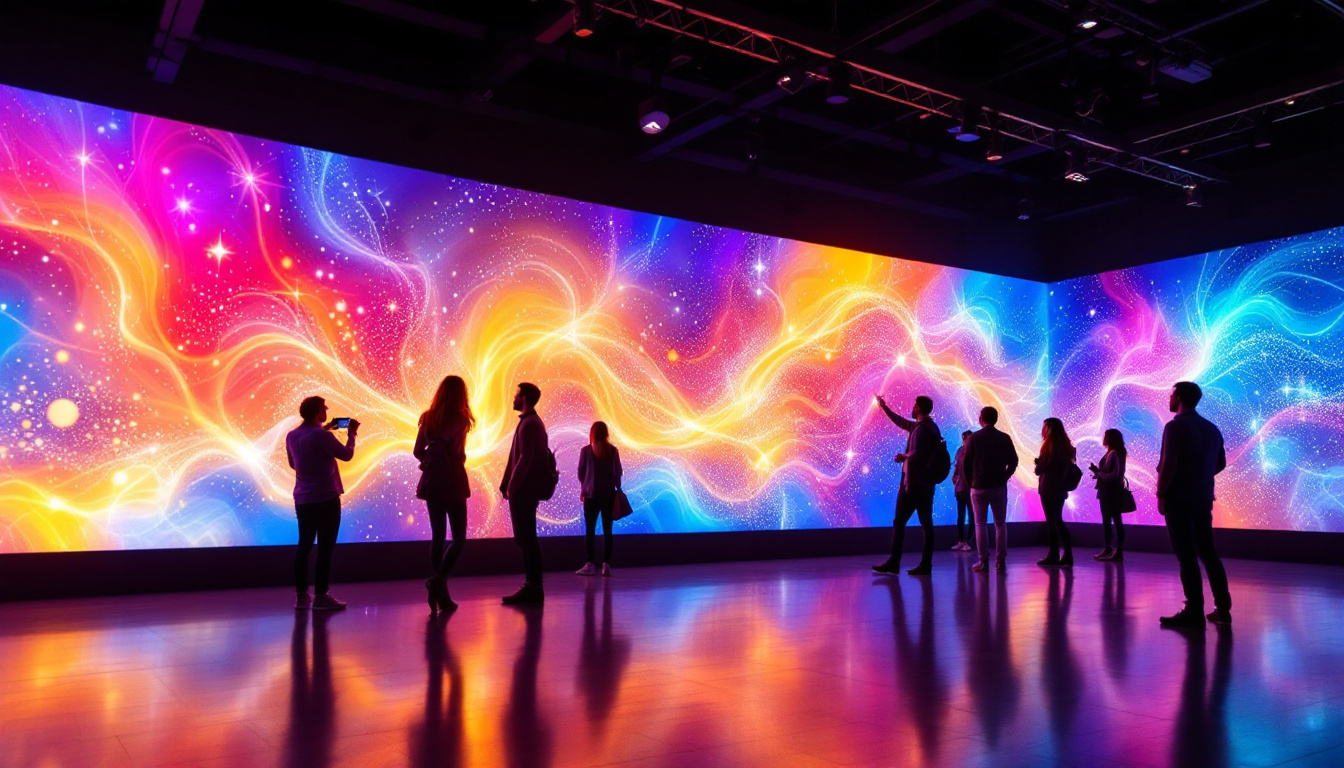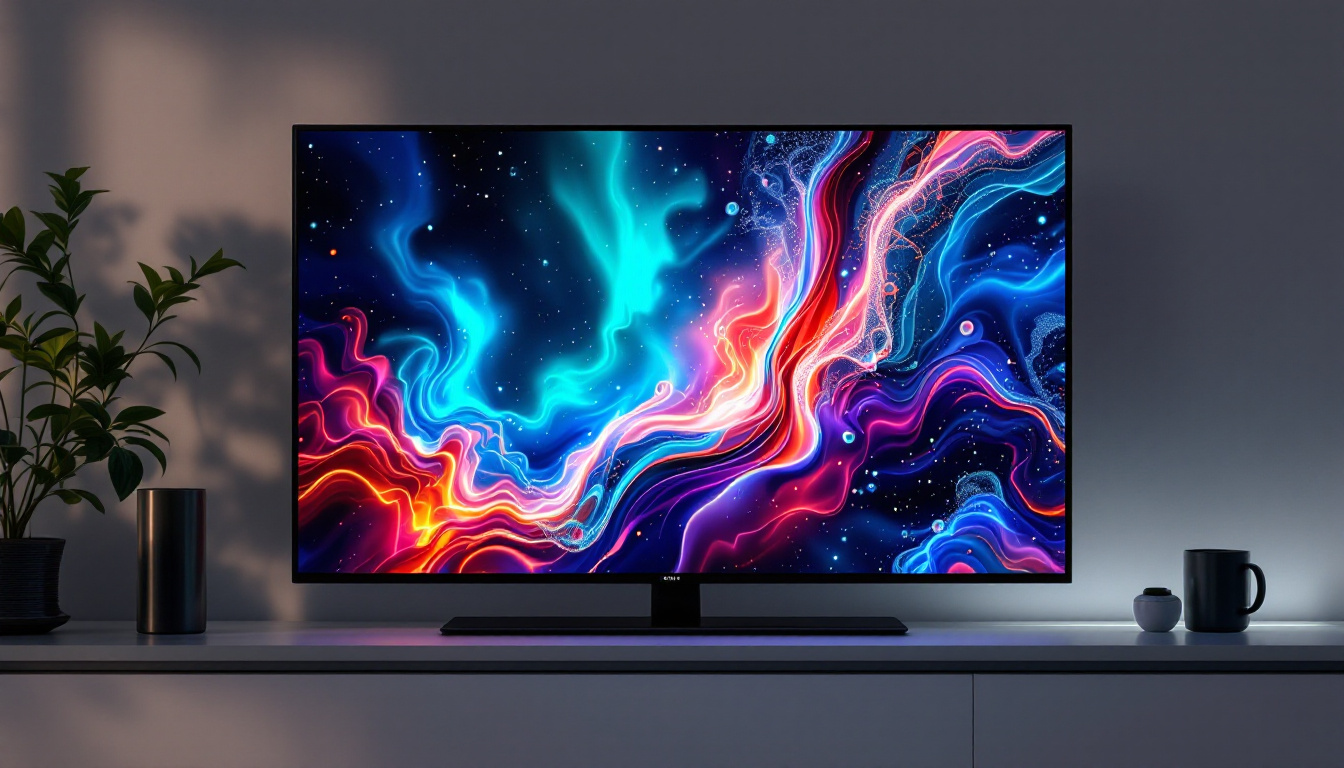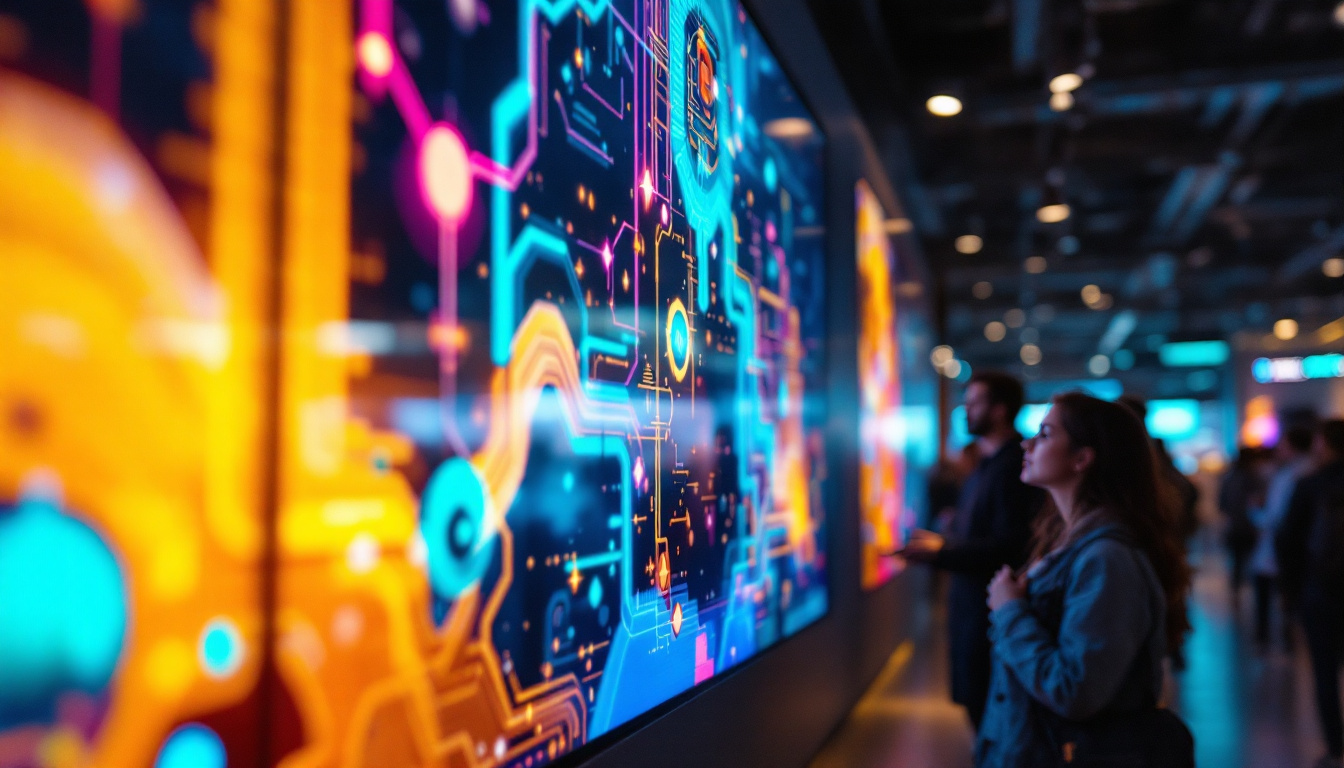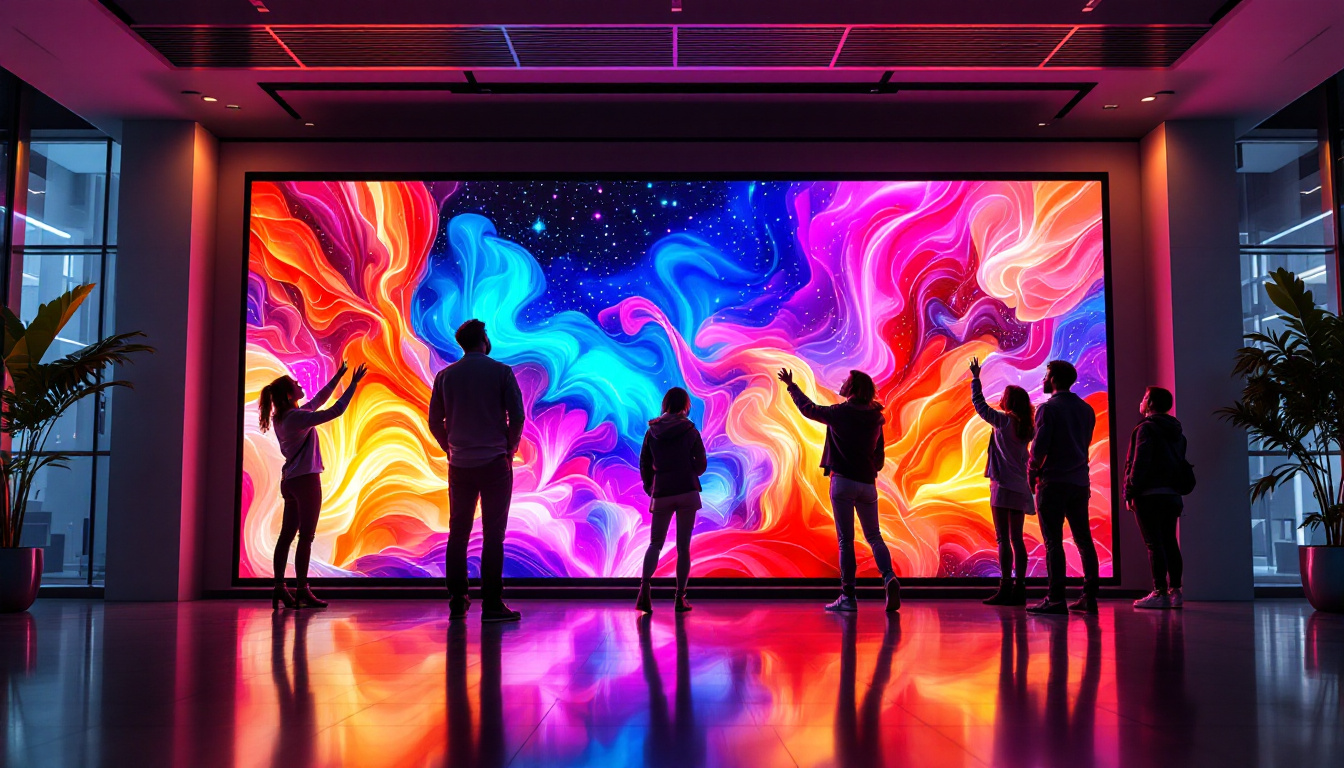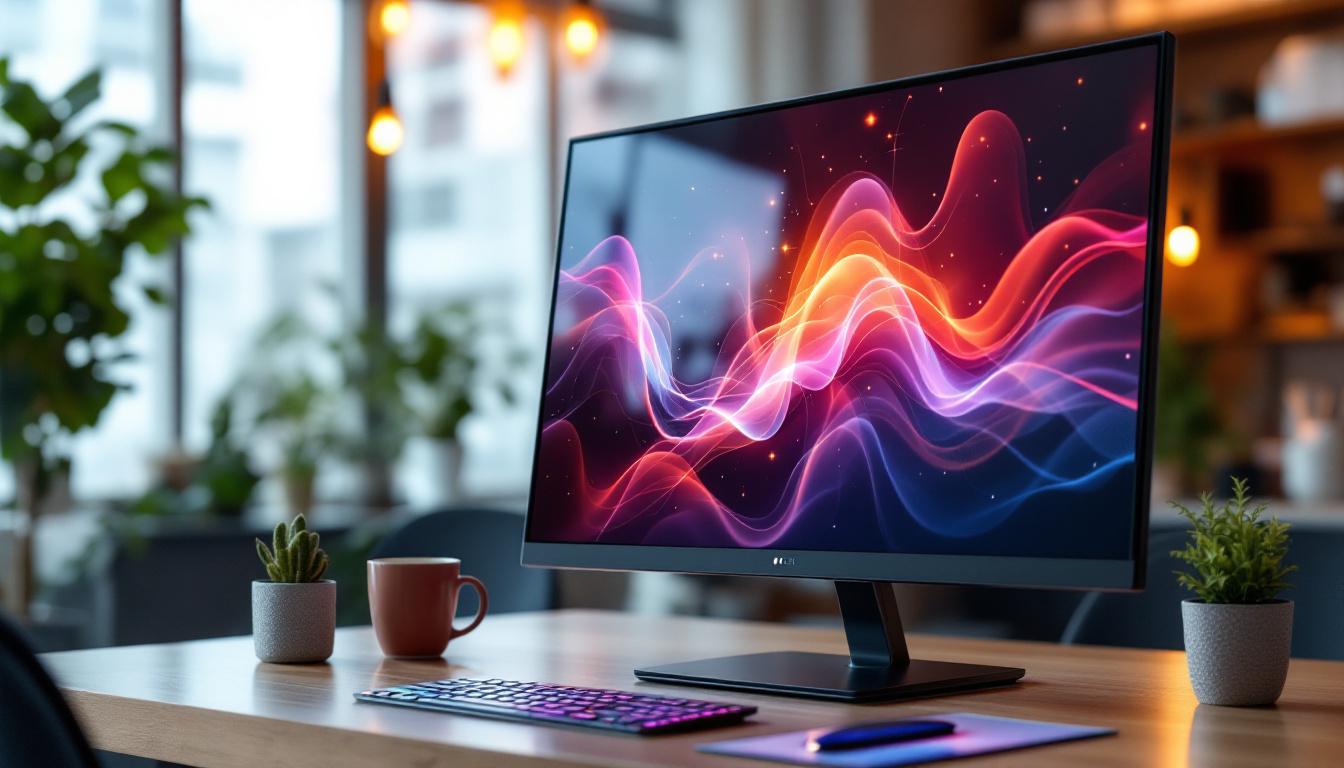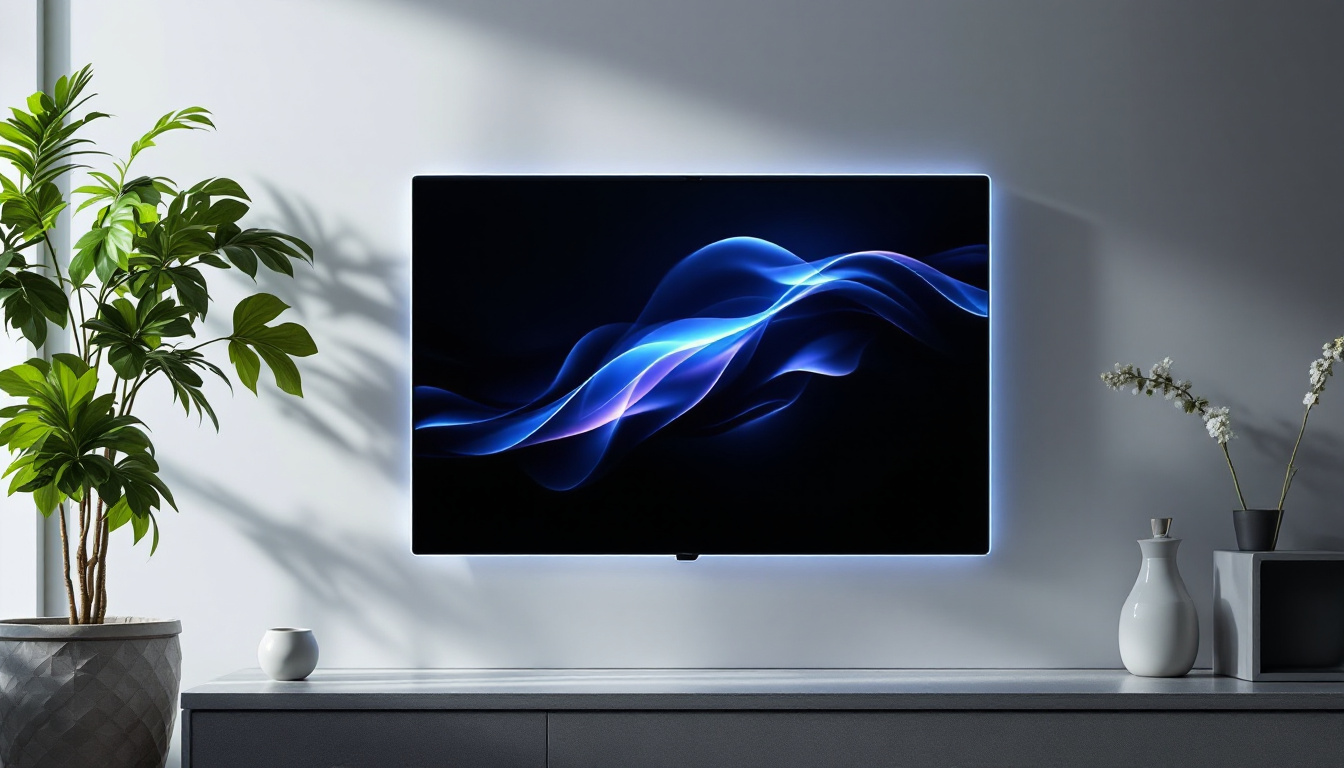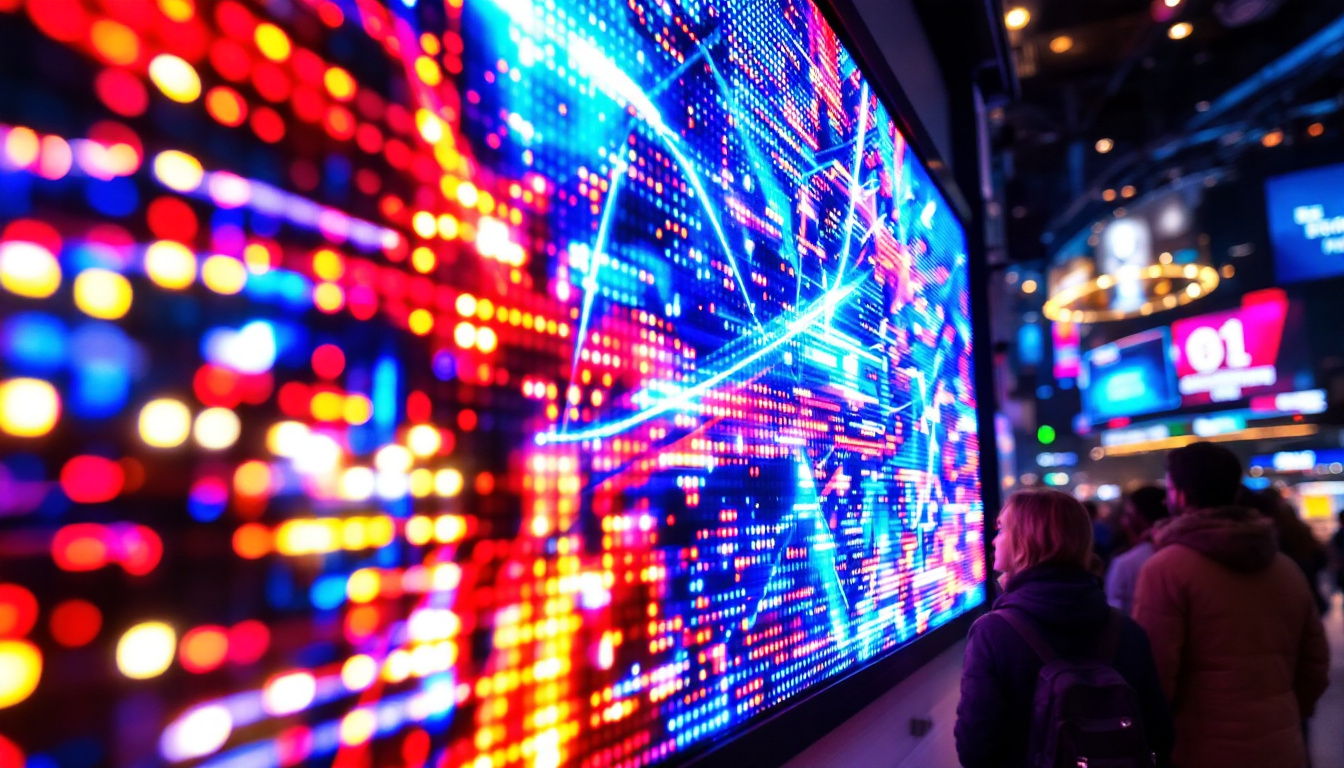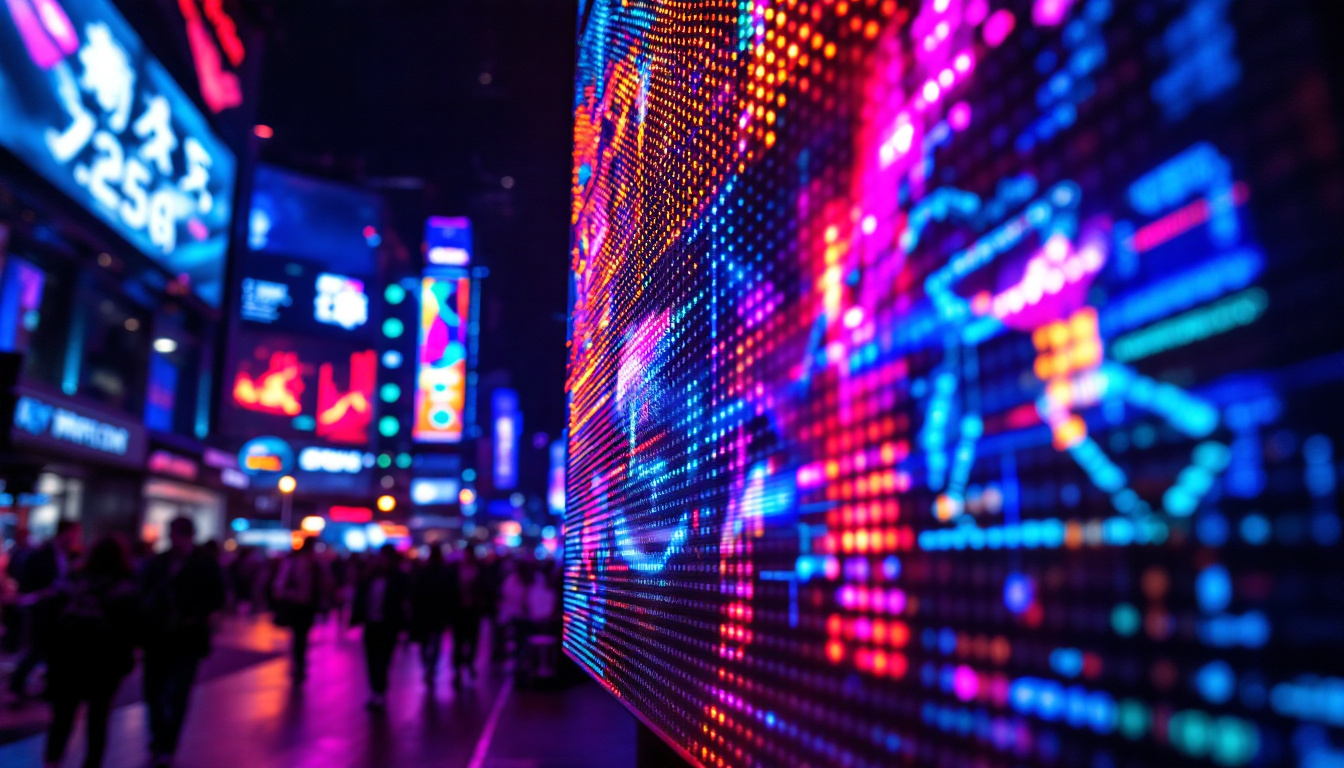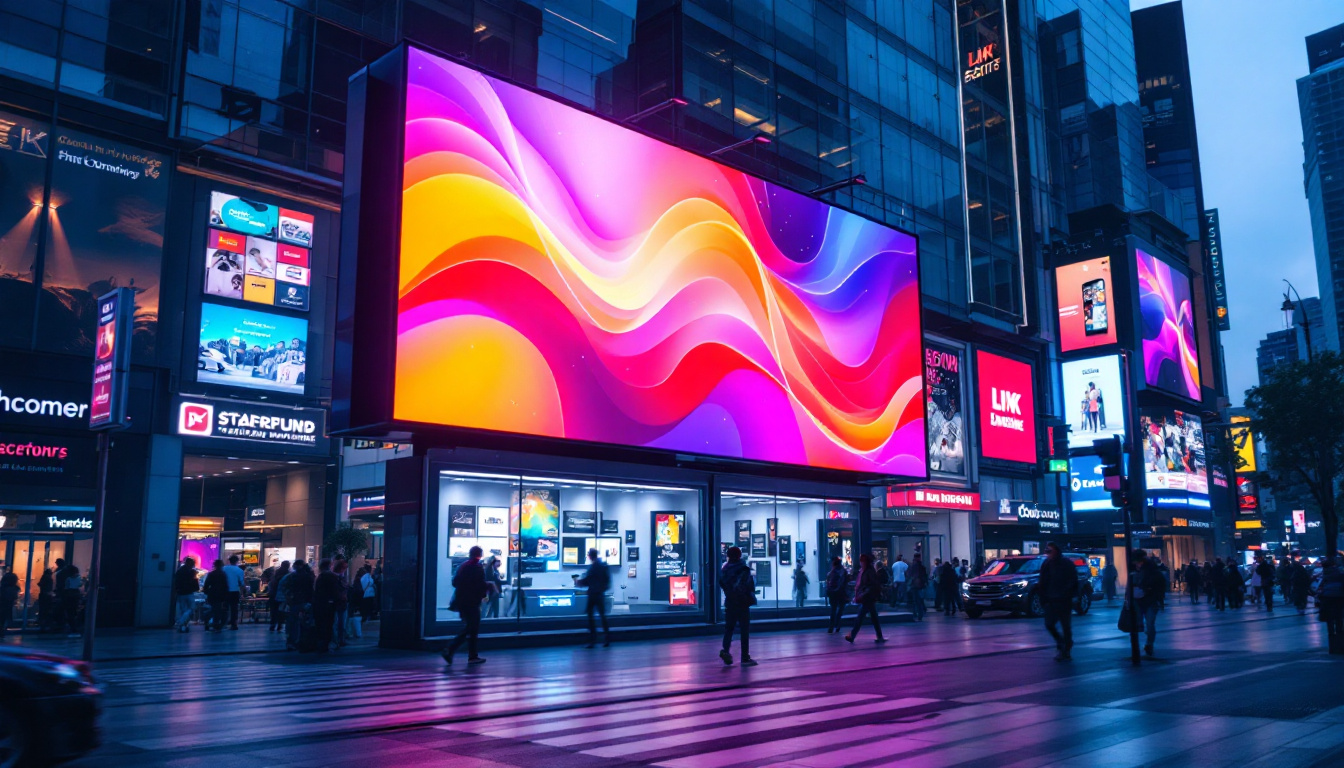In the world of modern technology, flexible LED display screens have emerged as a revolutionary advancement, transforming the way visual content is delivered and experienced. These screens offer unparalleled versatility, allowing for creative installations that were once thought impossible. This article delves into the intricacies of flexible LED displays, exploring their technology, applications, advantages, and future potential.
Understanding Flexible LED Displays
Flexible LED displays are made up of light-emitting diodes (LEDs) that can bend and conform to various shapes and surfaces. Unlike traditional rigid displays, these screens can be installed in unconventional locations, making them ideal for a wide range of applications. Their versatility allows them to be used in environments that require a high degree of adaptability, such as in modern architecture, where they can seamlessly integrate into building facades or interior designs.
What Makes LED Displays Flexible?
The flexibility of LED displays is primarily due to the materials used in their construction. Most flexible LED screens utilize a thin, lightweight substrate, often made from polymers or other flexible materials. This allows the screen to bend without damaging the LED components, providing the ability to create curved or even wrap-around displays. The innovation in materials science has made it possible to develop screens that not only bend but also maintain high resolution and brightness, essential for effective visual communication.
Additionally, advancements in technology have led to the development of smaller and more efficient LED chips, which can be densely packed together. This not only enhances the display quality but also contributes to the overall flexibility of the screen. The integration of advanced thermal management systems in these displays further ensures that they operate efficiently, even when subjected to varying environmental conditions. This combination of flexibility and performance makes them suitable for both indoor and outdoor applications.
Types of Flexible LED Displays
There are several types of flexible LED displays, each designed for specific applications. The most common types include:
- Curved LED Displays: These displays are designed to fit around corners or create immersive environments, often used in retail and event spaces. Their ability to create a 360-degree viewing experience enhances customer engagement and can significantly impact brand visibility.
- Rollable LED Displays: Rollable screens can be easily transported and set up, making them ideal for temporary installations or events. Their lightweight design allows for quick deployment, making them a favorite for trade shows and exhibitions where space and flexibility are paramount.
- Wearable LED Displays: These are smaller, flexible displays that can be integrated into clothing or accessories, providing a unique way to showcase information or art. As technology progresses, we are seeing innovative uses in fashion and advertising, where dynamic visuals can be displayed on garments, allowing for personal expression and interactive experiences.
Moreover, the rise of smart cities has fueled interest in flexible LED displays for urban infrastructure. These displays can be used for dynamic signage, providing real-time information to pedestrians and drivers, or even as part of public art installations that respond to environmental changes. The potential for integrating these displays into everyday life is vast, as they can adapt to various contexts and enhance the aesthetics of urban landscapes.
In the realm of entertainment, flexible LED displays are revolutionizing the way we experience performances. From concerts to theater productions, these displays can be shaped and positioned to create stunning visual backdrops that enhance storytelling. The ability to manipulate light and color in real-time allows for a more immersive experience, captivating audiences and pushing the boundaries of traditional stage design.
Applications of Flexible LED Displays
The versatility of flexible LED displays allows them to be used in a myriad of applications across various industries. From advertising to entertainment, the potential is vast.
Advertising and Marketing
Flexible LED displays have revolutionized the advertising industry. Their ability to conform to different shapes and sizes means that brands can create eye-catching installations that stand out in crowded environments. For instance, curved displays can wrap around pillars or walls, creating a 3D effect that captures attention.
Moreover, these displays can be programmed to show dynamic content, allowing businesses to update their advertisements in real-time. This flexibility not only enhances engagement but also maximizes the impact of marketing campaigns. The integration of augmented reality (AR) with flexible LED technology further amplifies this effect, enabling brands to create interactive experiences that draw consumers in and encourage them to explore products in an engaging manner. As a result, flexible LED displays are becoming a staple in high-traffic areas, such as shopping malls and airports, where competition for attention is fierce.
Entertainment and Events
In the entertainment sector, flexible LED displays are increasingly being used in concerts, festivals, and theatrical productions. Their adaptability allows for stunning visual effects that enhance the overall experience for audiences. For example, stages can be designed with curved LED screens that create immersive backdrops, transforming the performance space.
Additionally, flexible displays can be used in interactive installations, where audience participation is encouraged. This interactivity adds a new layer of engagement, making events more memorable. The use of flexible LED displays in live performances not only captivates audiences visually but also allows for real-time content changes, such as live feeds or social media integration, which can foster a sense of community among attendees. This technological advancement has led to a new era of live entertainment, where the boundary between performers and audiences blurs, creating a shared experience that resonates long after the event has ended.
Architectural and Interior Design
Architects and interior designers are embracing flexible LED displays as a way to enhance spaces. These screens can be integrated into walls, ceilings, and furniture, providing a unique aesthetic appeal. For instance, a flexible LED display can be used as a dynamic art piece in a lobby, changing visuals to match the mood or theme of the space.
Furthermore, the ability to create custom shapes allows designers to push the boundaries of traditional design, offering innovative solutions that can redefine environments. In commercial spaces, flexible LED displays can serve dual purposes as both functional elements and artistic installations, such as displaying information while also contributing to the overall ambiance. Residential applications are also emerging, with homeowners using flexible LED displays to create personalized environments that can adapt to different occasions, from cozy movie nights to vibrant parties. This trend highlights the growing demand for customizable living spaces that reflect individual tastes and lifestyles, making flexible LED technology an exciting frontier in modern design.
Advantages of Flexible LED Displays
Flexible LED displays offer numerous advantages over traditional display technologies. Understanding these benefits can help businesses and individuals make informed decisions about their use.
Lightweight and Portable
One of the primary advantages of flexible LED displays is their lightweight nature. This makes them easy to transport and install, which is particularly beneficial for temporary setups or events. Their portability allows for quick changes in layout and design, accommodating various needs and preferences.
High-Quality Visuals
Flexible LED displays provide high-resolution images and vibrant colors, ensuring that content is displayed with clarity and impact. The advanced technology used in these displays allows for better contrast ratios and brightness levels, making them suitable for both indoor and outdoor environments.
Moreover, the flexibility in design does not compromise the quality of the visuals, enabling creative installations that still deliver exceptional performance.
Energy Efficiency
Another significant advantage of flexible LED displays is their energy efficiency. Compared to traditional display technologies, LED screens consume less power while providing superior brightness and color accuracy. This not only reduces operational costs but also minimizes the environmental impact, making them a more sustainable choice.
Challenges and Considerations
While flexible LED displays offer numerous benefits, there are also challenges and considerations that need to be addressed. Understanding these can help in making informed decisions about their implementation.
Cost Factors
The initial investment for flexible LED displays can be higher than that of traditional displays. However, it is essential to consider the long-term benefits, such as lower maintenance costs and energy savings. Businesses should evaluate their specific needs and budget to determine if the investment is justified.
Durability and Maintenance
Flexible LED displays, while robust, may require more careful handling compared to rigid displays. Their flexibility can make them susceptible to damage if not properly installed or maintained. Regular maintenance is essential to ensure longevity and optimal performance, which can add to the overall cost.
The Future of Flexible LED Displays
The future of flexible LED displays looks promising, with continuous advancements in technology paving the way for even more innovative applications. As manufacturers invest in research and development, the capabilities of these displays are expected to expand significantly.
Technological Advancements
Future developments may include improvements in resolution, color accuracy, and energy efficiency. Innovations such as transparent LED displays and enhanced interactivity are also on the horizon, offering exciting possibilities for various industries.
Integration with Smart Technology
As smart technology continues to evolve, the integration of flexible LED displays with IoT devices and artificial intelligence will likely become more prevalent. This could lead to more personalized and interactive experiences for users, further enhancing the appeal of these displays.
Conclusion
Flexible LED display screens represent a significant leap forward in display technology, offering versatility, high-quality visuals, and innovative applications across various industries. While there are challenges to consider, the advantages often outweigh the drawbacks, making them a compelling choice for businesses and creative projects alike.
As technology continues to advance, the potential for flexible LED displays will only grow, paving the way for new and exciting possibilities. Whether in advertising, entertainment, or design, these displays are set to redefine how visual content is experienced, making them an essential component of the future landscape.
Discover LumenMatrix’s Innovative LED Display Solutions
Ready to elevate your visual experience with the versatility and high-quality visuals of flexible LED displays? LumenMatrix is at the forefront of LED display technology, offering a wide array of solutions that cater to your unique needs. From Indoor and Outdoor LED Wall Displays to specialized options like Vehicle, Sports, and Floor LED Displays, our products are designed to captivate your audience and amplify your message. Embrace the future of visual communication with LumenMatrix’s Custom, All-in-One, and LED Transparent Displays. Check out LumenMatrix LED Display Solutions today and transform your space into a dynamic visual masterpiece.

